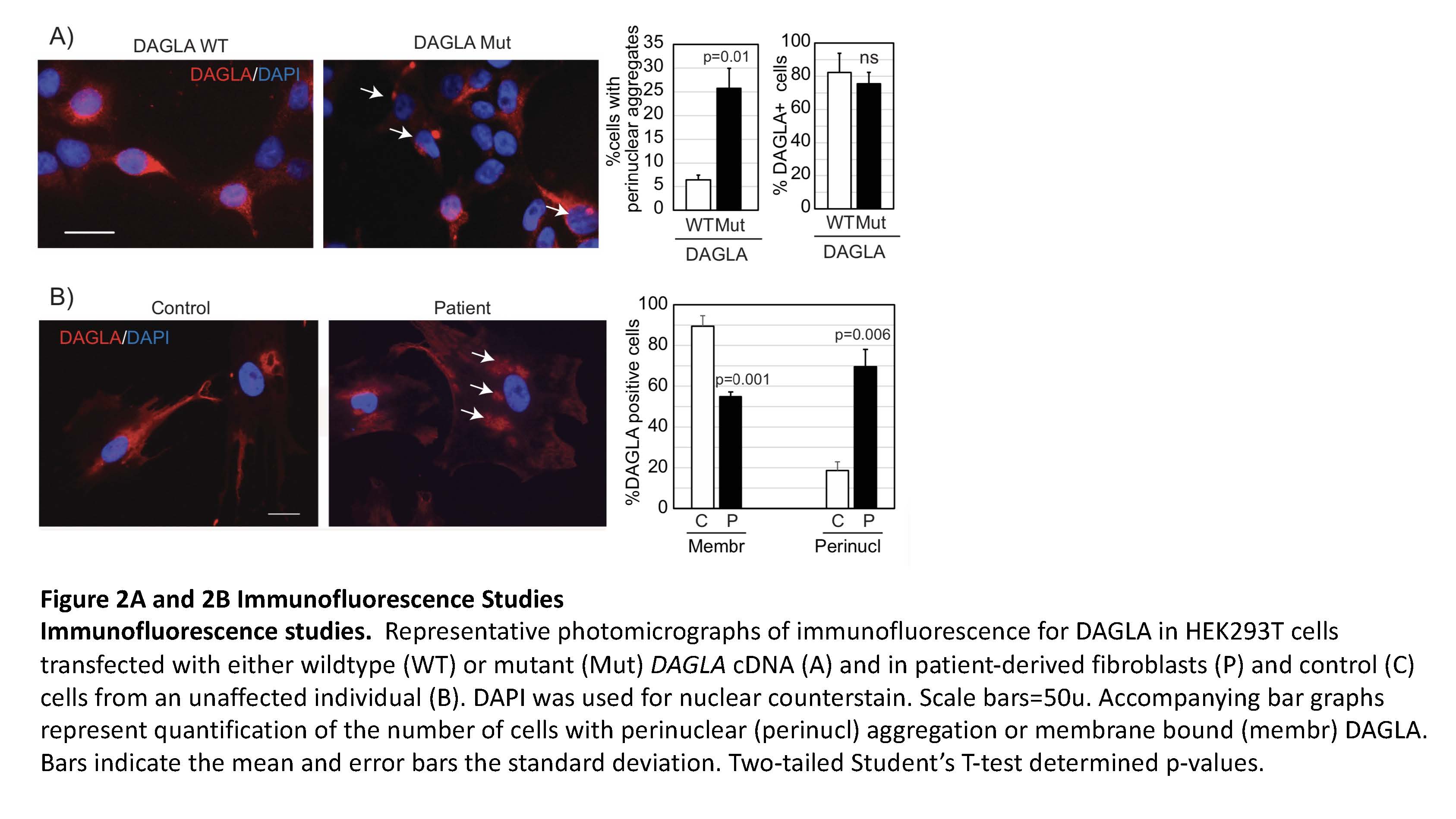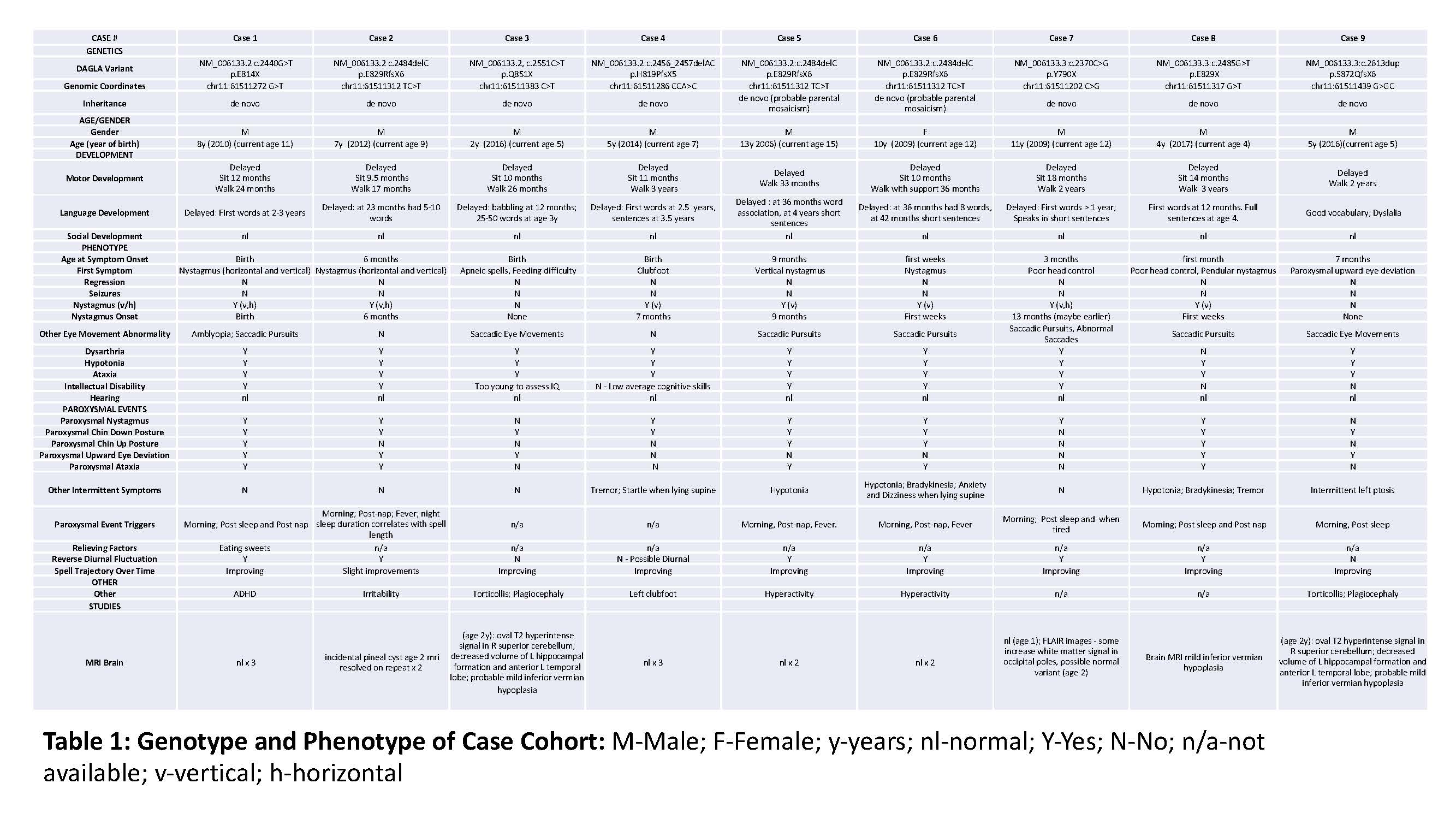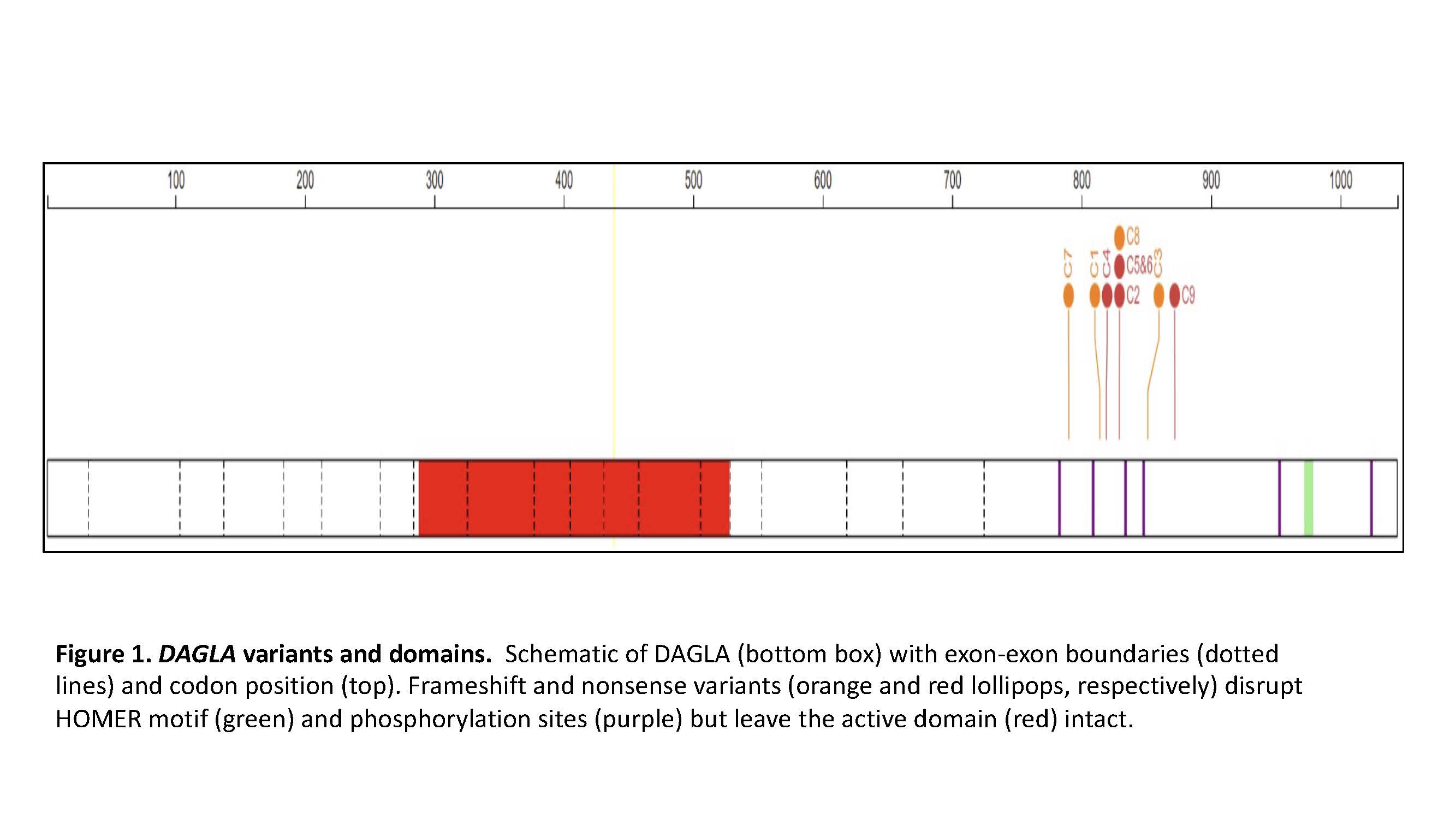Category: Genetics (Non-PD)
Objective: To define a new pediatric movement disorder and conclusively link the endocannabinoid system to human disease.
Background: The endocannabinoid system is a highly conserved and ubiquitous signaling pathway with broad ranging effects. Despite critical pathway functions, gene variants have not previously been convincingly linked to human disease.
Method: To uncover the genetic basis of unusual neurodevelopmental disorders, we combined clinical phenotyping with whole-exome or whole-genome sequencing analysis. Sanger sequencing, immunofluorescence, transcriptomics, enzymatic assays, and transient transfections were performed.
Results: We identified nine children from eight families with heterozygous, apparently de novo truncating variants in the last exon of DAGLA [figure1] with a neuro-ocular phenotype characterized by developmental delay, ataxia, and complex oculomotor abnormality.[table1] All children also displayed paroxysms of nystagmus or eye deviation accompanied by compensatory head posture and worsened incoordination most frequently after waking. RNAseq showed clear expression of the truncated transcript and no differences were found between mutant and wild type DAGLA activity. Immunofluorescence staining of patient-derived fibroblasts and HEK cells expressing the mutant protein showed distinct perinuclear aggregation not detected in control samples.[figure2]
Conclusion: This report establishes truncating variants in the last exon of DAGLA as the cause of a unique syndrome of childhood onset ataxia with developmental delay and paroxysmal ataxia, head and eye movements. Because enzymatic activity was preserved, the observed mis-localization of the truncated protein may account for the observed phenotype. Potential mechanisms include DAGLA haploinsufficiency at the plasma membrane or dominant negative effect. To our knowledge, this is the first report directly linking an endocannabinoid system component with human genetic disease. These findings set the stage for development of future therapeutic avenues and improved understanding of the role of the endocannabinoid system in neurodevelopmental and movement disorders.
To cite this abstract in AMA style:
J. Friedman, A. Mazumder, D. Ogasawara, R. Abou Jamra, G. Bernard, E. Bertini, L. Burglen, A. Crawford, H. Cope, A. Derksen, L. Dure, E. Gantz, M. Koch-Hogrebe, A. Hurst, S. Mahida, P. Marshall, A. Micalizzi, A. Novelli, H. Peng, *. Rady-Children'S-Institute-For-Genomic-Medicine, D. Rodriguez, S. Robbins, L. Rutledge, R. Scalise, S. Schließke, V. Shashi, S. Srivastava, I. Thiffault, S. Topol, *. Undiagnosed-Disease-Network, L. Qebibo, D. Wieczorek, B. Cravatt, S. Haricharan, A. Torkamani, M. Bainbridge. Endocannabinoid Dysfunction in Human Disease: Neuro-Ocular DAGLA-related Syndrome (NODrS), a unique pediatric condition [abstract]. Mov Disord. 2022; 37 (suppl 2). https://www.mdsabstracts.org/abstract/endocannabinoid-dysfunction-in-human-disease-neuro-ocular-dagla-related-syndrome-nodrs-a-unique-pediatric-condition/. Accessed December 12, 2025.« Back to 2022 International Congress
MDS Abstracts - https://www.mdsabstracts.org/abstract/endocannabinoid-dysfunction-in-human-disease-neuro-ocular-dagla-related-syndrome-nodrs-a-unique-pediatric-condition/



